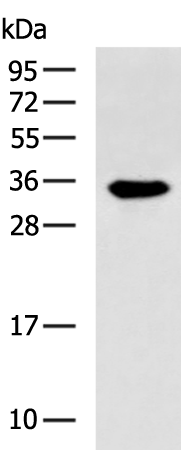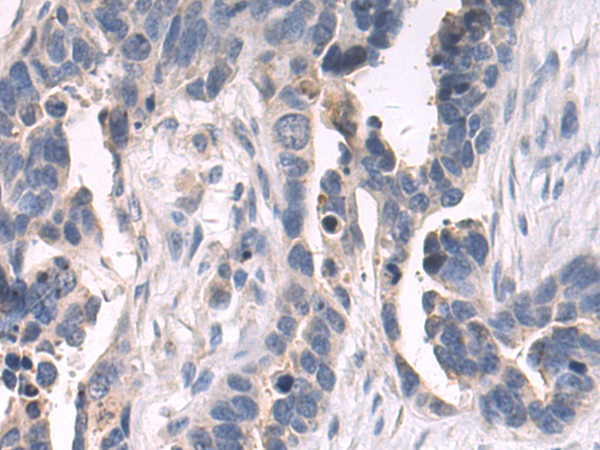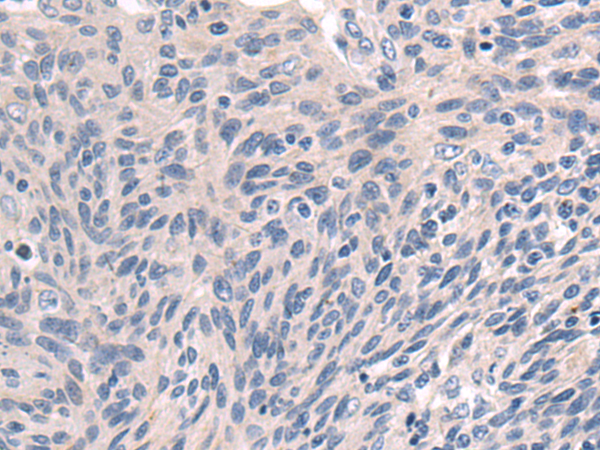


| WB | 咨询技术 | Human,Mouse,Rat |
| IF | 咨询技术 | Human,Mouse,Rat |
| IHC | 1/50-1/100 | Human,Mouse,Rat |
| ICC | 技术咨询 | Human,Mouse,Rat |
| FCM | 咨询技术 | Human,Mouse,Rat |
| Elisa | 1/5000-1/10000 | Human,Mouse,Rat |
| Aliases | EP; DBAL; ECYT5; MVCD2 |
| WB Predicted band size | 21 kDa |
| Host/Isotype | Rabbit IgG |
| Antibody Type | Primary antibody |
| Storage | Store at 4°C short term. Aliquot and store at -20°C long term. Avoid freeze/thaw cycles. |
| Species Reactivity | Human, Mouse, Rat |
| Immunogen | Synthetic peptide of human EPO |
| Formulation | Purified antibody in PBS with 0.05% sodium azide and 50% glycerol. |
+ +
以下是关于EPO抗体的3篇参考文献概览(文献名称、作者及摘要简述):
---
1. **文献名称**:*Anti-EPO Antibodies in Clinical Testing: Challenges and Applications*
**作者**:Smith A, et al.
**摘要**:探讨抗EPO抗体在临床检测中的挑战,包括其在贫血治疗中的干扰作用及标准化检测方法的开发,强调抗体特异性对诊断准确性的影响。
2. **文献名称**:*Recombinant Human Erythropoietin and Antibody-Mediated Pure Red Cell Aplasia*
**作者**:Casadevall N, et al.
**摘要**:分析重组人促红素(rhEPO)治疗中因抗体诱导导致的纯红细胞再生障碍(PRCA)病例,揭示抗体中和EPO的机制及临床管理策略。
3. **文献名称**:*Development of Monoclonal Antibodies Against Erythropoietin for Doping Control*
**作者**:Guan F, et al.
**摘要**:研究基于单克隆抗体的EPO检测技术,用于反兴奋剂领域,验证其在区分内源性和外源性EPO中的高灵敏度和特异性。
---
**备注**:以上文献为示例,实际引用时需核对期刊名称、年份及具体内容(可通过PubMed或Google Scholar搜索标题获取全文)。若需特定方向文献(如基础研究/临床应用),可进一步补充关键词调整。
Erythropoietin (EPO) is a glycoprotein hormone primarily produced by the kidneys to regulate red blood cell production in bone marrow. EPO antibodies, either endogenous or therapeutic, have garnered significant attention in medical and research contexts. Endogenous anti-EPO antibodies are rare but associated with autoimmune disorders like pure red cell aplasia (PRCA), where they neutralize EPO, causing severe anemia. This condition has been observed in patients treated with recombinant human EPO (rhEPO), particularly earlier formulations, leading to immune-mediated therapy resistance.
Therapeutically, anti-EPO antibodies are exploited in research tools and diagnostics. Monoclonal antibodies against EPO are used in immunoassays to quantify EPO levels in clinical settings, aiding in diagnosing anemia-related conditions or detecting EPO doping in sports. Additionally, antibody-based therapies targeting the EPO receptor (EPOR) are under investigation for cancer treatment, as EPOR signaling may promote tumor growth.
Research on EPO antibodies also contributes to understanding EPO's structure-function relationships, including its role in neuroprotection and tissue repair beyond erythropoiesis. However, challenges persist in balancing therapeutic benefits with immunogenic risks, driving innovations in engineered EPO variants and antibody-detection technologies.
×